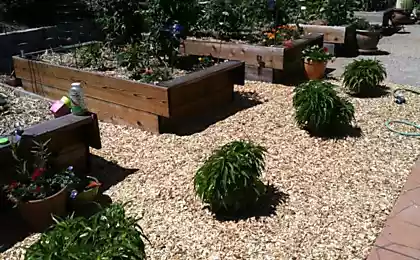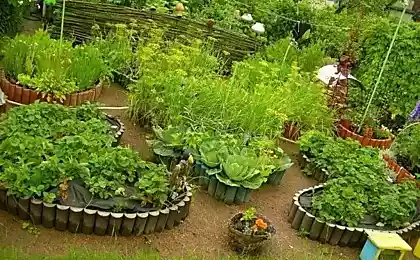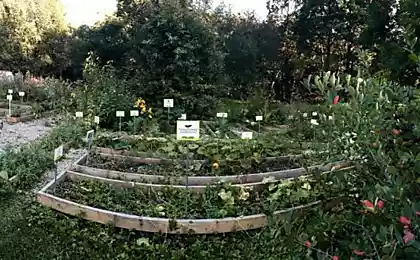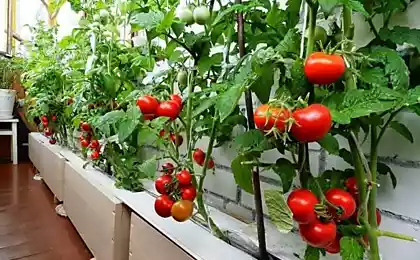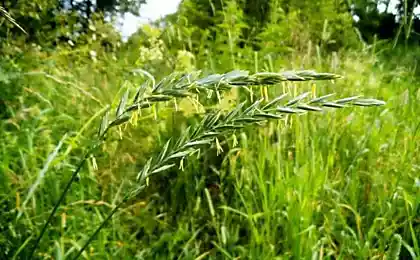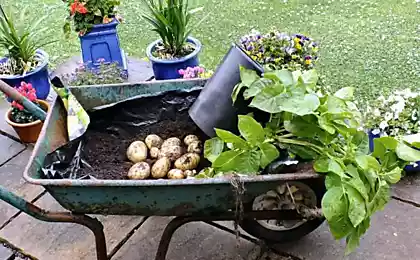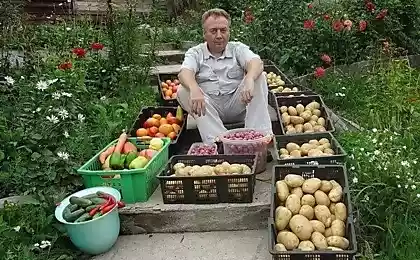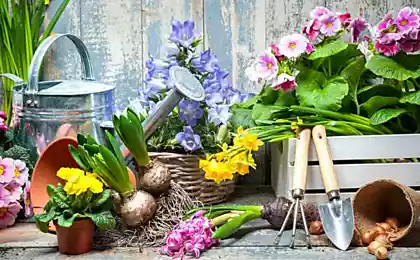545
Protective the scenes in the garden: what is it and what is needed
The control plants perform the function of the curtains — barrier from wind and scorching sun for crops more sensitive. The scenes can serve maize, sunflower, rye, peas and beans on poles.
In areas with dry warm climate try to place scenes from the prevailing winds or along the perimeter of the ridges, their main purpose is the conservation of moisture in the air around sensitive plants, the temperature drop due to partial shading.
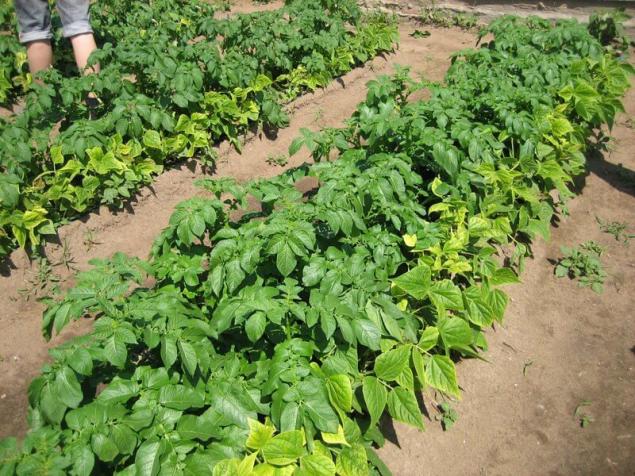
In areas with a cooler climate satisfied with protective planting on the North side in the plot, and at the ends of the ridges located in the direction North — South or along the at direction East—West. Rocker culture are sown (rye, pea) or planted seedlings (maize) before sowing or planting protect crops. This is particularly important when corn is not only protection, but also as a support for the winding of beans, which at moderate temperatures are rising rapidly and are able to "strangle".
On the North side of the scenes can be thick, composed of 2-3 rows spaced 50 cm and 40 cm between plants. In other cases — in one row. Sunflower and corn are sown in programsuse to 8°With the ground on a well-lit place. Reading the description of numerous varieties of these crops, it is necessary to pay attention to the cultivation. Mighty 3-meter long stems direct sowing is possible to obtain in the South and in the North only through seedlings and in the warm summer.
It is believed that the protective effect applies to scenes 4-5 of their heights (the effect of the rye strip of 50 cm height extends to 2 m, corn height 180 cm — up to 9 m). Winter rye planting can protect crops like cucumbers and zucchini seedlings, tomatoes. Strip enough wide range or 2 range, it can be used as a track and as a green fertilizer.
The scenes for pickles when sown directly into a bed can serve as the usual seals (lettuce, leaf cabbage, spinach) sown to main crop on both sides of the row at a distance of 15-20 cm from it in such a way that the plants were ready for harvesting 10-15 days after the emergence of cucumber seedlings and causing thickening.
Another example of rational use of space in the garden — the use of trellis for cucumbers, tomatoes, curly beans. As soon as the plants are tied, the edges of the ridges can sow cilantro and lettuce, plant Bush beans, and small peppers. But when the location of the rows from North to South low-growing plants will be well lit either from morning to mid-day (those to the East of the main crop) or in the afternoon and evening. If the rows are arranged from East to West, supplementing them only on the South side.
If one trellis, plants can be placed as steps. For example, to a support tied up the cucumbers, planted in one row with an interval of 25 cm on the South side along them at a distance of 30-35 cm are determinant tomatoes based on pegs and peppers (with a spacing of 35-40 cm in the row) and 30 cm number of dill, continued cilantro or other herbs.
Of the varieties of tomatoes are easiest to grow on a trellis in the open ground cherry tall: they grow fast, their stems and leaves so light, almost 100% of the flowers turn into fruit, a month after planting, you can begin removing the lower leaves (without sacrificing yield), and there is additional space for the sealing of the cultures.
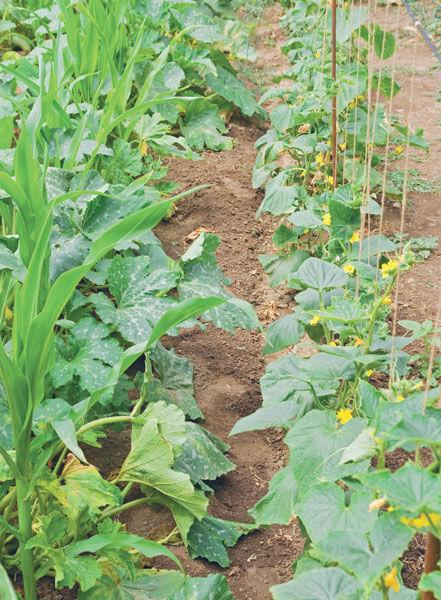
Examples of combined landings
For joint cultivation on the ridges with a width of 80 to 100 cm (convenient for manual processing) select compatible plants. Planting density of the main crop, as a rule, do not change, and for sealing reduce the adjusted location of the first to the second harvesting. On the period of development of methods of joint cultivation is better to place plants with a 10-15% reserve area is relatively recommended because accurately predict their dimensions is difficult, and the mutual inhibition from the unexpectedly rapid growth (due to high temperature, humidity, grade, etc.) face much larger losses.
Experience will help to improve schemes of planting.
Carrots placed on a bed in 3 rows (late varieties), alternated with 4 rows of green onions from a small sample and 4 rows of spinach (the number of onions, some spinach, some carrots, etc.). Late carrots can be combined with onion to the turnip from the sample and shallots.
Late cabbage or cauliflower, planted two rows may be supplemented by a number of iceberg lettuce in between and framed by rows of spinach around the edges of the ridge.
Early cabbage can be alternated with the root celery. In early spring time planted 2 rows of potted cabbage seedlings at a distance of 50 cm from each other; after 2-3 weeks the rows of planted seedlings of celery.
Two rows of holes prepared for planting tomatoes, can alternate with pairs of rows of dill, radish, onion on the pen and spinach (early sowing of dill or other herbs at the edges of the ridge, 2 rows of spinach in the middle and planting tomatoes after the frost).
The spinach may be ready before or shortly after planting the tomatoes and removed fast enough. Dill can be cut gradually as needed. Instead of dill you can sow coriander and chervil. After harvesting cold-hardy greens from the extreme series there is a great opportunity to plant seedlings of purple and green Basil (in a row 40 cm).

Three rows of planted seedlings of cabbage kohlrabi can be interspersed with 4 rows of beets or chard.
Planting cucumbers in the middle of the beds can be planted earlier surrounded by iceberg lettuce (for 2 rows) or radish (for 3 rows) and even earlier sown at the edges of the ridge parsley. Along with planting cucumber seedlings, you can sow instead of cleaned radish salad.
Potatoes are usually grown on a flat surface with ridging and extreme series o Bush beans.
Leeks grown with spacing 45-70 cm, which can take compact crops until the end of July (it is important not to forget about feeding).
The ability of individual herbs and ornamental plants to deter insect pests. The smell of the marigolds don't like aphid, the flavor of nasturtium is the whitefly, carrot fly. A border of marigolds or calendula will not only adorn the garden but also can protect them from pests. Planting-repellent in advance is necessary, since in most cases they only desorientiert insects and mites and prevent them from finding food objects, but not toxic to them.
What flowers to plant seedlings in JanuaryWhich is better: wood or briquettesJoint planting vegetable and ornamental plants make the garden nice. Homosecuality beds are becoming increasingly popular. A great example of a rounded bed of vegetable plants with vertical components: the 1st and 2nd outer rows of green and purple out polukochannye salad; 3rd row of beets, alternating with curly parsley; 4th row- ornamental Kale or amaranth (variety ‘Burly’ and ‘Valentine’); the Central circle is sweetcorn and sunflowers.published
Source: vk.com/wall-124849355?offset=160&own=1&w=wall-124849355_965
In areas with dry warm climate try to place scenes from the prevailing winds or along the perimeter of the ridges, their main purpose is the conservation of moisture in the air around sensitive plants, the temperature drop due to partial shading.

In areas with a cooler climate satisfied with protective planting on the North side in the plot, and at the ends of the ridges located in the direction North — South or along the at direction East—West. Rocker culture are sown (rye, pea) or planted seedlings (maize) before sowing or planting protect crops. This is particularly important when corn is not only protection, but also as a support for the winding of beans, which at moderate temperatures are rising rapidly and are able to "strangle".
On the North side of the scenes can be thick, composed of 2-3 rows spaced 50 cm and 40 cm between plants. In other cases — in one row. Sunflower and corn are sown in programsuse to 8°With the ground on a well-lit place. Reading the description of numerous varieties of these crops, it is necessary to pay attention to the cultivation. Mighty 3-meter long stems direct sowing is possible to obtain in the South and in the North only through seedlings and in the warm summer.
It is believed that the protective effect applies to scenes 4-5 of their heights (the effect of the rye strip of 50 cm height extends to 2 m, corn height 180 cm — up to 9 m). Winter rye planting can protect crops like cucumbers and zucchini seedlings, tomatoes. Strip enough wide range or 2 range, it can be used as a track and as a green fertilizer.
The scenes for pickles when sown directly into a bed can serve as the usual seals (lettuce, leaf cabbage, spinach) sown to main crop on both sides of the row at a distance of 15-20 cm from it in such a way that the plants were ready for harvesting 10-15 days after the emergence of cucumber seedlings and causing thickening.
Another example of rational use of space in the garden — the use of trellis for cucumbers, tomatoes, curly beans. As soon as the plants are tied, the edges of the ridges can sow cilantro and lettuce, plant Bush beans, and small peppers. But when the location of the rows from North to South low-growing plants will be well lit either from morning to mid-day (those to the East of the main crop) or in the afternoon and evening. If the rows are arranged from East to West, supplementing them only on the South side.
If one trellis, plants can be placed as steps. For example, to a support tied up the cucumbers, planted in one row with an interval of 25 cm on the South side along them at a distance of 30-35 cm are determinant tomatoes based on pegs and peppers (with a spacing of 35-40 cm in the row) and 30 cm number of dill, continued cilantro or other herbs.
Of the varieties of tomatoes are easiest to grow on a trellis in the open ground cherry tall: they grow fast, their stems and leaves so light, almost 100% of the flowers turn into fruit, a month after planting, you can begin removing the lower leaves (without sacrificing yield), and there is additional space for the sealing of the cultures.

Examples of combined landings
For joint cultivation on the ridges with a width of 80 to 100 cm (convenient for manual processing) select compatible plants. Planting density of the main crop, as a rule, do not change, and for sealing reduce the adjusted location of the first to the second harvesting. On the period of development of methods of joint cultivation is better to place plants with a 10-15% reserve area is relatively recommended because accurately predict their dimensions is difficult, and the mutual inhibition from the unexpectedly rapid growth (due to high temperature, humidity, grade, etc.) face much larger losses.
Experience will help to improve schemes of planting.
Carrots placed on a bed in 3 rows (late varieties), alternated with 4 rows of green onions from a small sample and 4 rows of spinach (the number of onions, some spinach, some carrots, etc.). Late carrots can be combined with onion to the turnip from the sample and shallots.
Late cabbage or cauliflower, planted two rows may be supplemented by a number of iceberg lettuce in between and framed by rows of spinach around the edges of the ridge.
Early cabbage can be alternated with the root celery. In early spring time planted 2 rows of potted cabbage seedlings at a distance of 50 cm from each other; after 2-3 weeks the rows of planted seedlings of celery.
Two rows of holes prepared for planting tomatoes, can alternate with pairs of rows of dill, radish, onion on the pen and spinach (early sowing of dill or other herbs at the edges of the ridge, 2 rows of spinach in the middle and planting tomatoes after the frost).
The spinach may be ready before or shortly after planting the tomatoes and removed fast enough. Dill can be cut gradually as needed. Instead of dill you can sow coriander and chervil. After harvesting cold-hardy greens from the extreme series there is a great opportunity to plant seedlings of purple and green Basil (in a row 40 cm).

Three rows of planted seedlings of cabbage kohlrabi can be interspersed with 4 rows of beets or chard.
Planting cucumbers in the middle of the beds can be planted earlier surrounded by iceberg lettuce (for 2 rows) or radish (for 3 rows) and even earlier sown at the edges of the ridge parsley. Along with planting cucumber seedlings, you can sow instead of cleaned radish salad.
Potatoes are usually grown on a flat surface with ridging and extreme series o Bush beans.
Leeks grown with spacing 45-70 cm, which can take compact crops until the end of July (it is important not to forget about feeding).
The ability of individual herbs and ornamental plants to deter insect pests. The smell of the marigolds don't like aphid, the flavor of nasturtium is the whitefly, carrot fly. A border of marigolds or calendula will not only adorn the garden but also can protect them from pests. Planting-repellent in advance is necessary, since in most cases they only desorientiert insects and mites and prevent them from finding food objects, but not toxic to them.
What flowers to plant seedlings in JanuaryWhich is better: wood or briquettesJoint planting vegetable and ornamental plants make the garden nice. Homosecuality beds are becoming increasingly popular. A great example of a rounded bed of vegetable plants with vertical components: the 1st and 2nd outer rows of green and purple out polukochannye salad; 3rd row of beets, alternating with curly parsley; 4th row- ornamental Kale or amaranth (variety ‘Burly’ and ‘Valentine’); the Central circle is sweetcorn and sunflowers.published
Source: vk.com/wall-124849355?offset=160&own=1&w=wall-124849355_965



